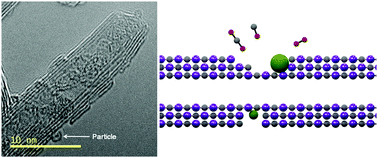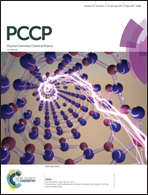Conductive multi-walled boron nitride nanotubes by catalytic etching using cobalt oxide
Abstract
Boron nitride nanotubes (BNNTs) are ceramic compounds which are hardly oxidized below 1000 °C due to their superior thermal stability. Also, they are electrically almost insulators with a large band gap of 5 eV. Thus, it is a challenging task to etch BNNTs at low temperature and to convert their electrical properties to a conductive behavior. In this study, we demonstrate that BNNTs can be easily etched at low temperature by catalytic oxidation, resulting in an electrically conductive behavior. For this, multi-walled BNNTs (MWBNNTs) impregnated with Co precursor (Co(NO3)2·6H2O) were simply heated at 350 °C under air atmosphere. As a result, diverse shapes of etched structures such as pits and thinned walls were created on the surface of MWBNNTs without losing the tubular structure. The original crystallinity was still kept in the etched MWBNNTs in spite of oxidation. In the electrical measurement, MWBNNTs with a large band gap were converted to electrical conductors after etching by catalytic oxidation. Theoretical calculations indicated that a new energy state in the gap and a Fermi level shift contributed to MWBNNTs being conductive.


 Please wait while we load your content...
Please wait while we load your content...